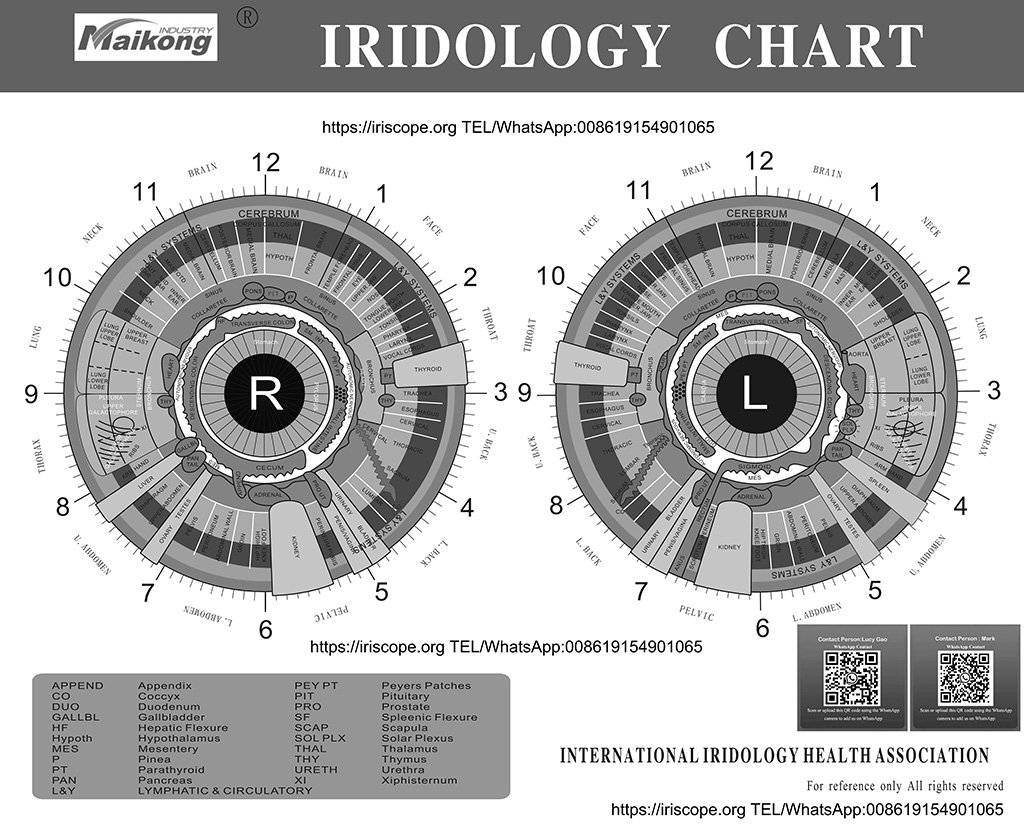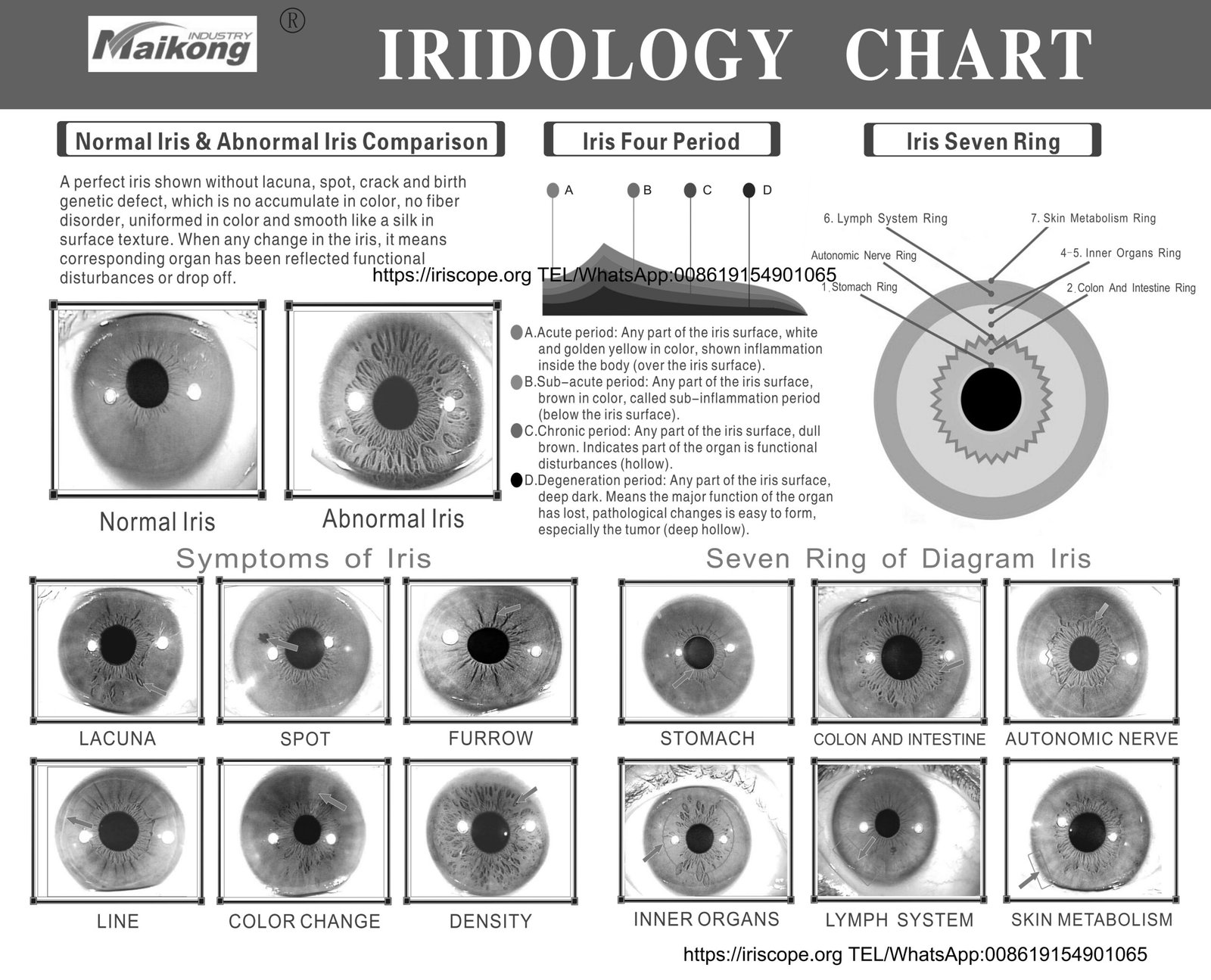The practice of Iridology Reading has traversed a fascinating journey through centuries of human history. This diagnostic method, which analyzes patterns, colors, and other characteristics of the iris to determine information about a person’s systemic health, has evolved from ancient observational techniques to modern technological applications. Today, practitioners worldwide utilize specialized equipment to conduct detailed iris examinations, revealing insights about bodily systems that might otherwise remain undetected through conventional medical assessments.
Explore our comprehensive range of professional-grade iriscopes, cameras, and software designed for accurate iris analysis.
View Our Equipment
Origins of Iridology Reading
Ancient Civilizations and Eye Analysis
The roots of iridology extend deep into ancient history. Archaeological evidence suggests that forms of iris analysis were practiced in ancient Egypt, with hieroglyphic records indicating physicians paid special attention to eye patterns. Similarly, traditional Chinese medicine and Ayurvedic practices incorporated eye examination as part of holistic diagnosis thousands of years ago.
Iridology Reading-In ancient Greece, Hippocrates, often considered the father of modern medicine, reportedly examined patients’ eyes for signs of illness. These early practitioners observed correlations between eye characteristics and health conditions, laying foundational concepts for what would eventually develop into modern Iridology Reading.
19th Century Medical Foundations
The modern practice of iridology began taking shape in the 19th century. The most significant development came from Hungarian physician Dr. Ignatz von Peczely (1826-1911), who is widely credited as the father of modern Iridology Reading. As a child, von Peczely noticed changes in an owl’s iris after the bird suffered a broken leg. This observation sparked his lifelong study of the connection between iris markings and physical conditions.
In 1881, von Peczely published his groundbreaking work “Discoveries in the Field of Natural Science and Medicine: Instruction in the Study of Diagnosis from the Eye,” which included the first comprehensive iris chart mapping body regions to specific areas of the iris. This chart became the foundation for all subsequent iridology mapping systems.
Key Pioneers in Iridology Reading Development
Following von Peczely’s work, several key figures advanced the field significantly. Swedish homeopath Nils Liljequist independently developed similar theories after observing changes in his own iris following medication with quinine and iodine. His detailed iris photographs and observations were published in “Om Ögondiagnosen” in 1893.
In the early 20th century, American chiropractor Dr. Henry Edward Lane brought iridology to the United States and trained many practitioners. Dr. Bernard Jensen later became one of the most influential American iridologists, refining the iris charts and publishing numerous books on the subject between the 1950s and 1980s.
Dr. Josef Deck of Germany made significant contributions by developing a more precise mapping system that divided the iris into 60 sectors corresponding to different body regions, a system still widely used in modern Iridology Reading practices.
Modern Advancements in Iridology Reading
Technological Innovations (1980s-Present)
The late 20th century witnessed revolutionary advancements in iridology technology. The introduction of digital photography in the 1980s transformed the practice, allowing for high-resolution iris images that revealed previously undetectable details. By the 1990s, specialized iriscopes with built-in cameras became available, enabling practitioners to capture, store, and analyze iris images with unprecedented precision.
The 21st century brought sophisticated iridology software programs capable of analyzing iris patterns automatically, identifying markings, and correlating them with potential health indicators. Modern equipment now includes high-definition digital iriscopes with magnification capabilities exceeding 30x, providing extremely detailed views of iris structures.
Professional Iriscope
Our advanced digital iriscope provides exceptional clarity and magnification for precise Iridology Reading. Features include adjustable magnification, high-definition imaging, and seamless software integration.
Iridology Software
Our comprehensive analysis software transforms iris images into detailed health assessments. With automated mapping, comparison capabilities, and client record management.
Standardization of Iridology Reading Practices
As iridology gained popularity, the need for standardized practices became evident. In the 1980s and 1990s, various international organizations were established to develop consistent methodologies, ethical guidelines, and training standards. The International Iridology Practitioners Association (IIPA), founded in 1982, played a crucial role in creating certification programs and standardized iris charts.
Modern Iridology Reading now follows systematic protocols, including standardized photography conditions, consistent analysis methods, and comprehensive documentation practices. These standards have helped enhance the credibility and reliability of iridology assessments.
Global Adoption Trends
The practice of iridology has seen varying levels of adoption worldwide. In Europe, particularly in Germany, Russia, and Italy, Iridology Reading has gained significant acceptance within complementary medicine frameworks. Many European naturopathic clinics routinely incorporate iris analysis as part of their assessment protocols.
In Asia, countries like Japan, South Korea, and China have integrated iridology into their traditional medicine systems. The United States, Australia, and Canada have seen growing interest, with increasing numbers of naturopathic physicians, chiropractors, and holistic health practitioners offering iridology services.
Today, professional Iridology Reading is practiced in over 70 countries, with international conferences, research collaborations, and training programs facilitating global knowledge exchange and advancement of the field.
Scientific Perspectives on Iridology Reading
Clinical Research Findings
Scientific investigation into iridology has produced mixed results. Some studies have found correlations between iris markings and certain health conditions. A 2013 study published in the IEEE Journal of Biomedical and Health Informatics demonstrated relationships between pupil and collarette changes and specific digestive disorders using biometric analysis techniques.
Research in Russia and Germany has shown promising results in using iris analysis to identify predispositions to certain conditions. However, many studies in Western medical journals have been critical of Iridology Reading as a diagnostic tool, citing inconsistent results and methodological limitations.
Controversies and Criticisms
The medical establishment has often criticized iridology for lacking sufficient scientific validation. Critics point to studies showing that iridologists sometimes cannot consistently identify the same conditions in the same patients, raising questions about reliability and reproducibility.
Proponents argue that many studies fail to account for the holistic nature of Iridology Reading, which aims to identify tendencies and predispositions rather than provide definitive diagnoses. They also note that variations in practitioner training and methodology can significantly impact results.
The debate continues, with advocates calling for more sophisticated research designs that better reflect actual iridology practice, while skeptics maintain that existing evidence does not support its clinical utility.
Advantages of Iridology
- Non-invasive assessment method
- Can identify potential health issues before symptoms appear
- Provides holistic view of body systems
- Helps identify constitutional strengths and weaknesses
- Complements other health assessment approaches
Limitations of Iridology
- Inconsistent scientific validation
- Variation in practitioner interpretation
- Not intended to diagnose specific diseases
- Results can be influenced by lighting and equipment quality
- Should not replace conventional medical diagnosis
Integration with Holistic Medicine
Despite controversies, Iridology Reading has found its place within integrative and holistic health frameworks. Many practitioners use it as one component of a comprehensive assessment approach, alongside medical history, physical examination, laboratory testing, and other diagnostic methods.
In naturopathic and complementary medicine settings, iridology is valued for its ability to identify potential areas of weakness or imbalance, guiding preventive strategies and personalized wellness plans. It is particularly appreciated for its holistic perspective, considering the interconnectedness of body systems rather than isolating specific symptoms.
Schedule a Professional Iridology Reading Consultation
Our experienced practitioners provide comprehensive iris analysis using state-of-the-art equipment. Discover what your eyes reveal about your health.
Book Consultation
Future of Iridology Reading
AI and Digital Mapping Tools
The future of iridology is being shaped by artificial intelligence and advanced digital technologies. Machine learning algorithms are being developed to analyze thousands of iris images, identifying patterns and correlations with unprecedented accuracy. These AI systems can detect subtle iris features invisible to the human eye and compare them against vast databases.
Digital mapping tools now create three-dimensional models of the iris, allowing for more precise analysis of tissue layers and structures. These technologies promise to standardize Iridology Reading practices and reduce subjective interpretation variations among practitioners.
Predictive Health Applications
Emerging research is exploring iridology’s potential in predictive health applications. By combining iris analysis with genetic information, biomarkers, and health history, researchers aim to develop more accurate models for identifying disease predispositions and personalized prevention strategies.
Some forward-thinking health systems are investigating the integration of Iridology Reading into preventive health screenings, particularly for identifying early signs of metabolic, inflammatory, and degenerative conditions. These applications focus on early intervention and lifestyle modifications rather than disease diagnosis.
Educational Certification Programs
As interest in iridology grows, educational programs are evolving to meet higher standards. Advanced certification programs now combine traditional Iridology Reading techniques with modern medical knowledge, anatomy, physiology, and clinical assessment skills.
Universities and colleges in several countries have begun incorporating iridology courses into complementary medicine curricula. Online learning platforms have made high-quality training accessible globally, contributing to standardization of practices and raising the overall quality of iridology education.
| Advancement Area |
Current Development |
Future Potential |
| Imaging Technology |
HD digital iriscopes with 30x magnification |
Quantum imaging with cellular-level detail |
| Analysis Software |
Automated pattern recognition |
AI-driven predictive analysis with 95%+ accuracy |
| Integration |
Complementary to holistic assessments |
Fully integrated with conventional medical diagnostics |
| Research |
Limited clinical studies |
Large-scale longitudinal research programs |
| Education |
Certification programs |
Accredited university degree specializations |
Embracing the Evolution of Iridology Reading
From its ancient origins to today’s advanced digital applications, Iridology Reading continues to evolve as a fascinating approach to understanding human health. While debates about its scientific validity persist, thousands of practitioners worldwide find value in its holistic perspective and non-invasive nature.
As technology advances and research methodologies improve, iridology may find increasing validation and integration within broader healthcare frameworks. What remains consistent throughout its history is the fundamental premise that the eyes—particularly the intricate patterns of the iris—reflect valuable information about our physical constitution and wellbeing.
Whether you’re a healthcare professional interested in expanding your assessment tools or an individual curious about what your eyes might reveal, the journey of Iridology Reading represents humanity’s enduring quest to understand the body’s complex systems through observation, pattern recognition, and holistic thinking.
Contact Us for Professional Iridology Reading Services
Our team provides comprehensive iridology equipment, training, and consultation services worldwide.




























